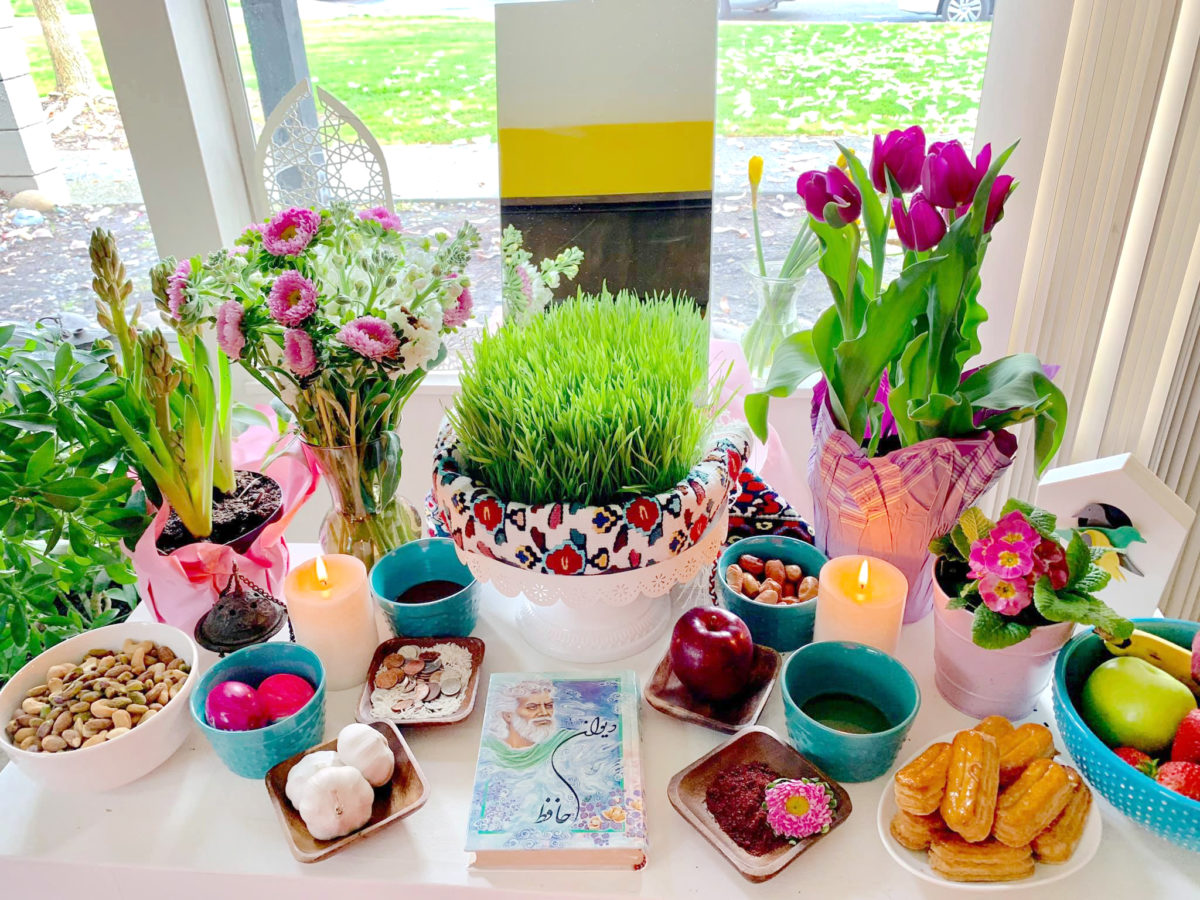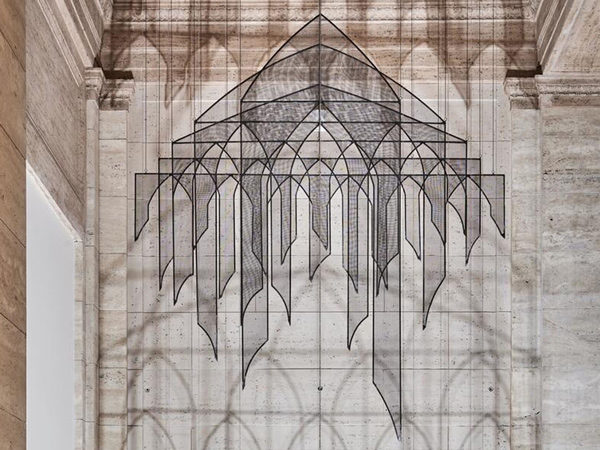Video
Growing Sabze, a Symbol of Rebirth
Sabze is wheat, barley, lentil, or other sprout grown in a dish or pot that symbolizes rebirth. It is one of the seven traditional items included in a Haft-Sin tablescape in celebration of the Persian New Year, Nowruz.
This activity was created by artists Shaghayegh Cyrous and Keyvan Shovir using memories and traditions they have from celebrating Nowruz together and with their families.

Image of a Haft-Sin tablescape provided by Shaghayegh Cyrous and Keyvan Shovir.
Nowruz, or Persian New Year, is the day of the vernal equinox, marking the beginning of spring in the Northern Hemisphere. It marks the first day of the first month (Farvardin) of the Iranian calendar, when the earth finishes its rotation around the sun. Nowruz is a symbol of spring and renewal, a new day.
A decorative table, the Haft-Sin, is the main focal point of Nowruz and it remains set up for the 13 days of the celebration. It is created on a special cloth (sofreh) and includes seven traditional items, each beginning with the Persian letter sin.
- Sabzeh (سبزه): wheat, barley, lentil, or others sprouts growing in a dish, symbolizing rebirth
- Samanu (سمنو): a sweet pudding made from wheat germ, symbolizing affluence
- Senjed (سنجد): the dried fruit of the oleaster tree, symbolizing love
- Seer (سیر): garlic, symbolizing medicine and for protection against illness
- Seeb (سیب): apples, symbolizing beauty and health
- Somaq (سماق): sumac berries, symbolizing (the color of) sunrise, a new dawn
- Serkeh (سرکه): vinegar, symbolizing age and patience
The following are also placed on the table:
- A book of poetry by Hafiz, a Persian poet from the 14th century or any other book that is special to the family, representing knowledge and wisdom
- Coins, often in a bowl of dry rice
- A mirror in the center of the table
- Candles, which are often lit for the whole 13 days of the Nowruz celebration
- Hyacinths (سنبل) and spring flowers, which bring the smell of the new year and spring
- Painted eggs, symbolizing fertility, often painted by children with a natural dye made from onion peels, beets, or turmeric
- Pastries, bringing sweetness to the year
- Saat (ساعت), a clock for representing time
-
Growing Your Own Sabze
-
Materials
- Eggs
- Wheat, barley, or lentil seeds (or any other sprouting seeds)
- Soil
- Water
- Egg carton or egg holders
-
Optional Materials
- Googly eyes
- Markers
- Ribbon
-
Directions
- Carefully crack the top of the eggs, creating a hole wide enough to pour out the egg yolk and white. (Tip: Keep the egg yolks and whites for cooking or baking something delicious.)
- Rinse the eggshells.
- Fill the eggshells with potting soil.
- Sprinkle a single dense layer of wheat seeds (or any other sprouting seeds).
- Optional: You can decorate your egg planters with googly eyes, markers, and ribbons to make them festive for Nowruz. Try using colors and textures you usually see during the spring.
- Place the filled eggshells into the egg carton or holder and set them near a sunny window.
- Spray with water and wait. You will see the beginning of green shoots in a couple of days.




